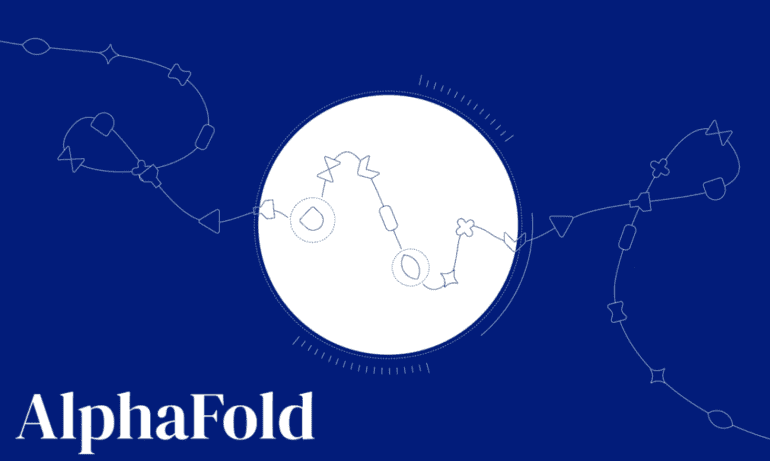TL;DR:
- Google DeepMind’s AlphaFold and its creators, Demis Hassabis and John Jumper, received the Lasker Award for pioneering research in understanding protein structures using artificial intelligence.
- Optical Coherence Tomography (OCT) inventors, James Fujimoto, David Huang, and Eric Swanson, won the Lasker-DeBakey prize for their noninvasive diagnostic technology.
- AlphaFold’s AI-driven protein structure predictions achieved unprecedented accuracy, revolutionizing the field.
- OCT, born from ultrahigh-speed photography and lasers, transformed the diagnosis of eye diseases and found applications in cardiology and gastroenterology.
- Both innovations have had a profound impact on scientific research and medical diagnostics.
Main AI News:
The 2023 Lasker Awards have once again shone a spotlight on groundbreaking advancements in biomedical research, recognizing pioneers who have dedicated their efforts to unveiling the hidden facets of our biological world. This year’s laureates represent two distinct eras of innovation—one characterized by decades of tireless exploration and another, a testament to the remarkable potential of artificial intelligence.
Google DeepMind’s AlphaFold and the Power of AI
Google DeepMind’s AlphaFold, alongside its visionary inventors Demis Hassabis and John Jumper, stood at the forefront of the Lasker Award for basic medical research. This machine learning-powered technology has unraveled one of life’s most profound mysteries: the intricate three-dimensional structures of proteins. These biological origami, formed by amino acid sequences, dictate the functions that underpin all living organisms.
What sets AlphaFold apart is its ability to embark on this structural journey armed with nothing more than amino acid sequences. In a matter of seconds, it achieves what traditional methods like X-ray crystallography, nuclear magnetic resonance spectroscopy, or cryoelectron microscopy took months to accomplish. AlphaFold’s exceptional performance was highlighted by its victory in the Critical Assessment of protein Structure Prediction challenge (CASP), where it not only secured the top prize but also outperformed human expectations.
In 2020, AlphaFold unveiled the long-elusive code of protein folding, a puzzle that had baffled scientists for nearly half a century. This process, hidden within cells and completed in milliseconds, theoretically allows for an astronomical number of combinations. Nature, however, accomplishes this task with breathtaking precision, a phenomenon AlphaFold now replicates.
Fast forward to CASP’s 14th competition, and AlphaFold evolved into AlphaFold2, boasting a median score of 92.4. To put this into perspective, its margin of error was akin to the width of a single atom. This quantum leap in biological research redefined our understanding of protein structures.
Since then, AlphaFold has embarked on an ambitious mission to visualize nearly 200 million protein structures from across the biological spectrum, including animals, plants, and bacteria. These 3D protein structures hold the key to transformative breakthroughs, from disease combat to addressing environmental challenges like plastic pollution and food security.
Optical Coherence Tomography (OCT): Illuminating the Path to Diagnosis
In the realm of clinical research, the Lasker-DeBakey prize celebrates the ingenuity of James Fujimoto, David Huang, and Eric Swanson. Their creation, Optical Coherence Tomography (OCT), emerged from the convergence of ultrahigh-speed photography, lasers, and inter-satellite communications.
OCT, akin to ultrasound but employing light instead of sound waves, revolutionized the diagnosis of eye diseases in the 1990s. Ophthalmologists gained the ability to perform cross-sectional scans of the retina, detecting vision-threatening conditions such as glaucoma, diabetic retinopathy, and macular degeneration. Over time, OCT’s reach expanded beyond ophthalmology, finding applications in cardiology and gastroenterology, all without the need for harmful radiation.
Zeiss, a key player in this journey, commercialized OCT technology in 1996, enabling it to deliver both 2D and 3D images. Today, it plays a vital role in monitoring optical nerve fiber thinning in glaucoma patients.
The impact of Fujimoto, Huang, and Swanson’s work extends far beyond accolades. Their 1991 paper in Science ranks among the journal’s most-cited, with over 10,800 citations. Additionally, an astounding 30 million OCT ophthalmic procedures are performed annually, a testament to the enduring relevance of their innovation.
Conclusion:
These Lasker Award-winning advancements in biomedical research signify a transformative era. AlphaFold’s AI-driven protein structure prediction sets new standards, while OCT’s noninvasive diagnostic capabilities continue to save lives. These innovations represent significant opportunities for the healthcare and biotechnology markets, promising breakthroughs in disease treatment and prevention, as well as new avenues for medical technology development. Investors and businesses should closely monitor these developments for potential market implications and partnerships in the rapidly evolving healthcare landscape.

